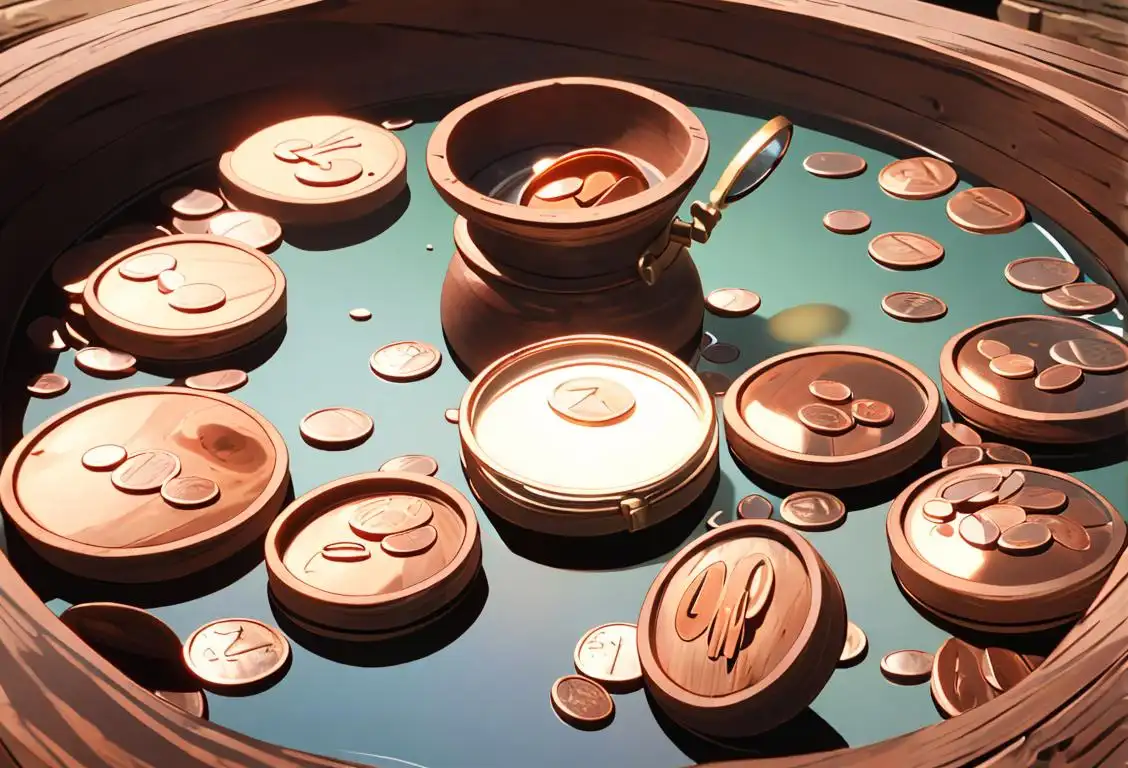National Penny Day

Hey there, penny enthusiasts! Get ready to celebrate the remarkable National Penny Day. It's time to explore the fascinating history and significance of those tiny copper coins that somehow seem to multiply in our pockets. So, gather your spare change and let's dive into the exciting world of pennies!
When is Penny Day?
It's national penny day on the 23rd May.
A Brief History of the Penny
The penny may be the lowest denomination of currency, but its impact on our lives is immeasurable. Dating back to the 8th century, the penny has evolved over time, adapting to different economies and changing designs. In fact, the first true penny was introduced in the Kingdom of Wessex in 790 AD.
Fast forward to the United States, where the penny became a vital part of the nation's currency system. The very first U.S. penny was minted in 1793, and it featured a beautiful profile of Lady Liberty. Since then, pennies have been minted in various designs, including the iconic Abraham Lincoln penny introduced in 1909.
The Sentimental Side of Pennies
While pennies may seem insignificant in today's world of plastic cards and digital payments, they hold a special place in our hearts. We've all heard the saying, 'Find a penny, pick it up. All day long, you'll have good luck!' It's a tradition that still brings smiles to faces and invites a moment of reflection on the little things that can brighten our days.
Many people also associate pennies with sentimental moments. They're often kept as keepsakes from special events or as reminders of loved ones. In fact, some even carry a lucky penny in their pocket as a personal talisman.
Pennies in the Digital Age
As our society becomes increasingly cashless, the role of the penny has been debated. Advocates argue for preserving them as a symbol of tradition and history, while critics question their usefulness in an era where even vending machines accept electronic payments.
Despite the ongoing discussions, National Penny Day is a reminder that even the smallest things can have significant value and meaning. So, next time you find a penny on the street, take a moment to appreciate its history, enjoy a sprinkle of good luck, and maybe, just maybe, use it to make a wish.
History behind the term 'Penny'
8th century
The introduction of the silver penny
In the 8th century, the concept of the penny was first introduced in Anglo-Saxon England. These were silver coins, originally weighing about one pennyweight (1.5 grams). The term 'penny' derives from the Old English word 'penig', which means 'coin'.
8th century AD
Introduction of the Denarius
During the reign of Charlemagne, the Frankish King, the Denarius was introduced as a silver coin. It was the predecessor to the modern penny, and its name was derived from the Roman silver coin called denarius. The denarius became widely accepted and used across Europe as a form of currency.
9th century AD
Anglo-Saxon Silver Pennies
In England, during the reign of King Offa, the silver penny was introduced as the primary coin. These Anglo-Saxon pennies were made of silver and had a cross design on one side, with the mint name and moneyer on the other. These pennies were the foundation for the monetary system of England for centuries.
12th century
The transition to minting copper pennies
During the 12th century, the penny started to be minted in copper instead of silver. This transition made the coins less valuable and more accessible to a wider range of people. The copper pennies were lighter in weight and had a distinct reddish-brown color.
13th century AD
Introduction of Minting Techniques
During the 13th century, advancements in minting techniques allowed for the production of more standardized and uniform pennies. This led to higher quality coins with consistent weight and purity. The use of coin presses improved the efficiency of coin production and increased their circulation.
16th century
The use of the term 'penny' in other countries
By the 16th century, the term 'penny' had spread beyond England and was being used in other countries. For instance, in Scotland, there were 'bawbees' and 'plack' coins, but the common term used for a unit of currency was still 'penny'. This reflects the widespread influence of English monetary systems and trade.
16th century AD
Introduction of Copper Pennies
In the 16th century, copper pennies came into use. These coins were less valuable than the silver pennies and were often used for smaller transactions. Copper pennies were minted with different designs and inscriptions, showcasing the ruler or monarch of the time.
17th century
The introduction of paper money pennies
In the 17th century, many countries began issuing paper money. Although not physical coins, certain denominations of paper money were referred to as 'pennies' to maintain familiarity and continuity with the traditional currency. This usage helped preserve the historical significance of the term 'penny'.
18th century AD
Standardization of the Penny
In the 18th century, the British government standardized the size, weight, and value of the penny. This move ensured that all pennies issued by the Royal Mint were of the same specifications, making them easily recognizable and accepted nationwide. The British penny became a symbol of monetary stability and consistency.
20th century
Penny's significance in idiomatic expressions
During the 20th century, the term 'penny' gained significance in various idiomatic expressions and sayings. For example, 'a penny for your thoughts' and 'save pennies for a rainy day' became popular phrases that reflect the value associated with money and saving. These idioms have crossed cultural boundaries and are still commonly used today.
20th century AD
Decimalization and Modern Pennies
In the 20th century, many countries including the United Kingdom introduced decimal currency systems. The traditional penny was redefined as one-hundredth of a pound, and new designs were introduced. Modern pennies are typically made of copper-plated steel or other alloys to reduce costs of production.
Did you know?
Did you know that the average penny remains in circulation for about 25 years? Talk about stretching your value! Remember to check your couch cushions and piggy banks for any hidden treasures!Tagged
romance awareness financeFirst identified
23rd May 2016Most mentioned on
23rd May 2016Total mentions
200Other days
Family Day
Awareness Day
Seniors Day
Opposite Day
Action Day
One Day
Honesty Day
Happiness Day
Suicide Prevention Month Day
Believe Day









